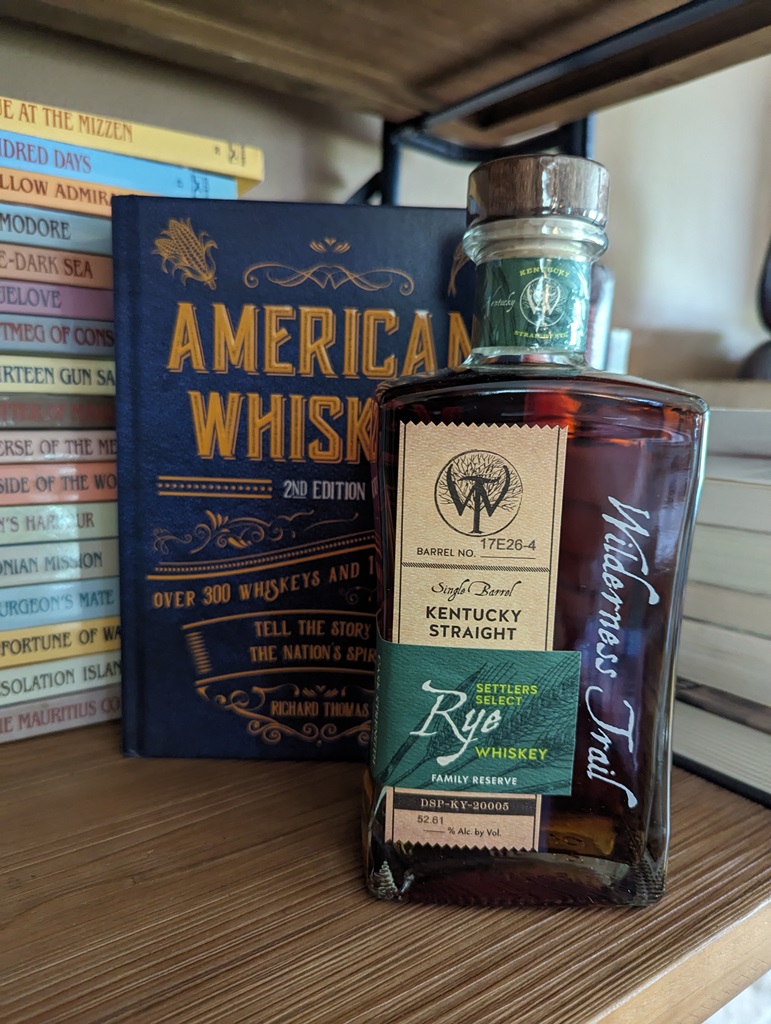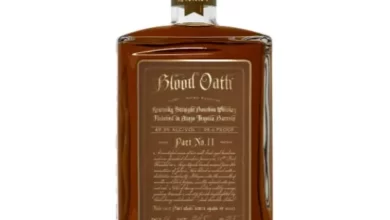Is The American Fifth Bottle Doomed?
Will 700ml Banish 750ml To History?
By Richard Thomas

(Credit: Richard Thomas)
At the end of 2020 and in the midst of the Pandemic, the US Alcohol and Tobacco Tax and Trade Bureau (TTB) announced that they would alter regulations allowing for the sale of spirits in 700ml bottles in the United States. For decades prior, the US had a singular requirement for the classic American “fifth” bottle (or 1/5 of a liquid gallon) for wine and spirits, which corresponds to 750ml. The reasons for this traditional standard go back to England and the French wine trade, something to do with nice round numbers for what one full cask of French wine could be bottled into.
In Europe, they adopted a 700 ml standard in 1990 and applied it to both spirits and wine. In 2002, the EU loosened this regulation, which is why many winemakers in Europe went right back to the 750ml bottle size, as it was still common not just in the US, but also in other wine-making countries. Spirits, however, stayed in 70cl, unless they were being exported to the US. This gave those whisky-makers, in Scotland in particular, with a smaller output a disincentive to export their wares to the US: what was the point of regularly sending anything to the US if your products were a few hundred bottles of this and a few dozen bottles of that? They would find enough of buyers for rare whiskies sold in such smaller numbers without having resort to the Americans, even if the US was and still is the world’s most lucrative whiskey market.
Then the wall fell down. The rule change by the TTB meant that effective in 2021, the 700ml bottle became legal for sale in the US. That change did more than open the door to the import of any and all spirits made in Europe, however. It also raised the possibility that US spirits-makers, including whiskey-makers, would standardize around the 700ml bottle as part of a bid to simplify production and drive their exports. As is often the case, change frightens the chattering denizens of bourbon message boards, and well into 2023 the rumors of companies scheming to “shrinkflate” American whiskey by shedding a shot (50ml) from the bottle while keeping the old price abounded. Almost three years after the switch was made, just how real does the mass adoption of the 700ml Euro-bottle look?

(Credit: Richard Thomas)
Who Has Made The Switch?
To date, the only regular release American whiskeys from a major company bottled solely in 700ml bottles are the Jack Daniel’s Bottled in Bond series, consisting of bonded versions of their Tennessee whiskey, rye whiskey and their three-mash hybrid. Those with memories will recall the original Jack Daniels Bottled in Bond was created as a primarily travel retail item and came in a one-liter bottle, and the bonded series itself was never available in the 750ml size.
In hindsight, it’s clear that when Brown-Forman made the decision to introduce their premium Bonded line with the initial two expressions in 2022, it was as an experiment. Two years later, the company has not changed any other regular release product over to 700ml only. No other company has followed suit. And all of that has come at a time when shrinkflation is rife in the American food and drinks industries, and despite an alleged “glass shortage” in 2022 and 2023. Although certain limited edition releases are now in 700 ml, that category as a whole already had many expressions in 375 ml and 500 ml.
Although making a bottle size switch for a major product could have a long lead time, if a company had decided to seize the opportunity during 2021, that decision would surely have been executed and visible by 2024. I suspect that if we do not see a major brand transition, say of Jim Beam White Label going to 700ml as part of a revamped look, during 2025, we probably will not see it at all.
If It Ain’t Broke, Don’t Fix It

(Credit: Richard Thomas)
The logic for not making the switch is more compelling than the scenarios sketched in forums and blogs back in 2021 and 2022. First, recall the uproar that greeted Maker’s Mark when they cut the proof of their bourbon in 2013. What that incident proves is reducing the size of a beloved bourbon brand for the US market will be noticed and generate a storm of discontent among consumers. Middle and senior management at America’s big whiskey corporations are filled with people who were part of the industry in 2013, so every meeting convened on the subject knows this.
Moreover, all of the major whiskey-makers already have bottling lines, suppliers and shippers set up to handle both sizes, which reduces pressure. This is a logistical issue they have been working with and handling well for decades. Keep in mind these companies also ship pint, 1 liter and half-gallon bottles, among others.
This mix of already bottling in 750ml, with the consequent supply chain and infrastructure in place, and the very likely cultural backlash that would attend making the switch explain why there is little demonstrated appetite for it with the big liquor companies. Bacardi, for example, owns Angel’s Envy and Dewar’s (along with the associated single malts, like Aberfeldy). The latter has a foot in both bottle sizes, as do many of their spirits brands, but the company has indicated it has no intention of switching any of its major regular release products over to 700ml simply because American law allows for it now. Brown-Forman and Campari have also gone on record with the same attitude since 2021. So while it is not out of the question that King of Kentucky may, at some point in the future, become a 700ml bottling, Old Forester is not very likely to.
For smaller or mid-sized producers with an eye on diversifying sales through exports, however, the incentives to bottle only in 700ml are stronger. If you are aren’t shipping hundreds of thousands or millions of cases in manifold bottles, but still want to lean heavily into exports, consolidating around the 700ml could be attractive. Before Trump blundered the US into a world trade war in 2018, many craft whiskey producers had aimed to expand their sales through exports, often citing targets of 10 to 25%. It’s not hard to imagine a rapidly expanding small or medium sized whiskey company reaching a point where they need to invest in a new bottling plant anyway, weighing the pros and cons, and switching formats to 700ml only.
So for the future, I suspect it is more likely that a New Riff or a Catoctin Creek * might change to an all-700ml than a Heaven Hill or Beam Suntory. Following that logic, the fifth bottle is very, very far from doomed.
* Editor’s Note: I chose those two companies not because there has been any word from them about bottle format changes–there has not–but as indicators of the scale in question.




This is a lazy comment from a troll. Any visit to a well stocked spirits store would easily show how uninformed I am. I want to use Woodford Reserve special releases like Batch Proof making the switch to the smaller 700ml size, even though the author is discussing major regular releases to make a point, and things like Master’s Collection have come in 375ml and 500ml for decades. I’m also dumb enough to think mentioning the ENTIRE line of GlenAllachie scotch whisky counts for something, even though it wasn’t even available in the US until after the bottle regulations change in late 2020.
That is one way to deal with trolls.